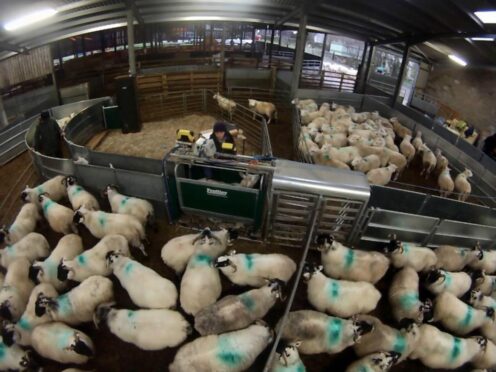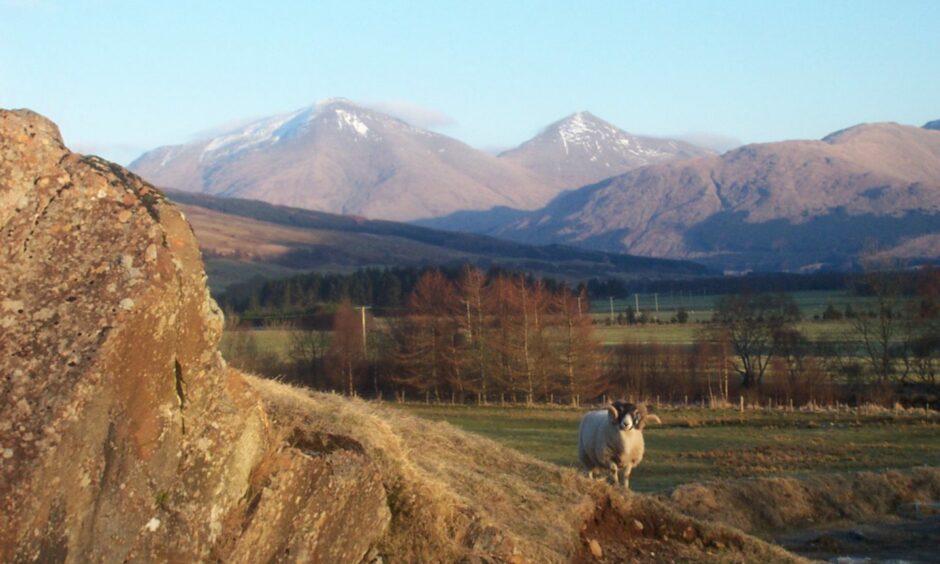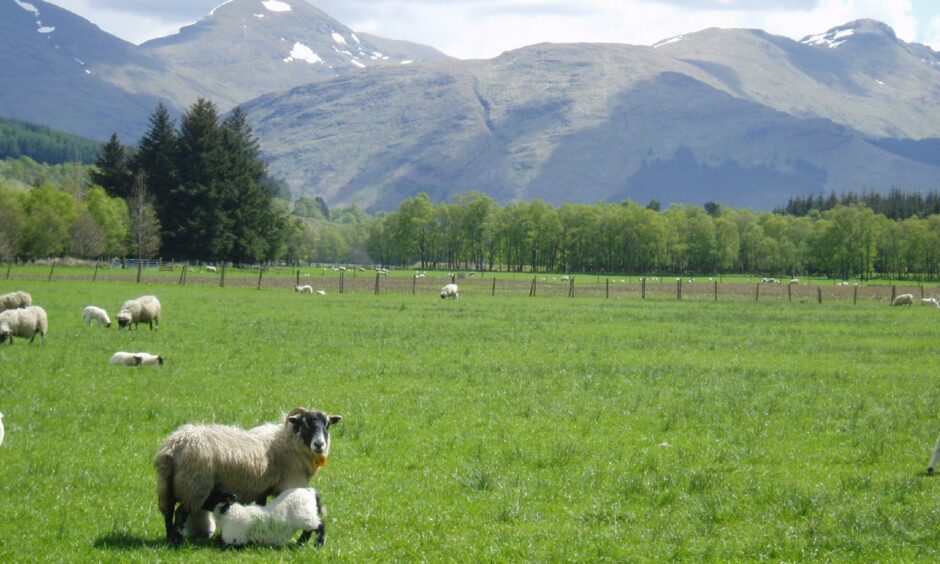At the start of March I provided the opening presentation at an Opportunity North East (ONE) farmers workshop held at the Thainstone Centre which focused on digital technology solutions for future farming.
This ONE Agritech Programme has established two new digital demonstrator farms and is supported by the Scottish Government’s North East Economic Recovery and Skills Fund.
ONE is working with SAC Consulting and SAOS to help provide guidance and support to those demonstrator farmers.
My presentation drew on our experience at our upland farms at Crianlarich, where the increased use of technology to collect data to inform on-farm decision making has become a major focus of our work.
Our journey started more than 10 years ago when we started using a weigh crate and auto drafter to help improve our understanding of the health and performance of individuals within our sheep flocks when they were brought into the fank for handling events.
The weigh crate recognises individual sheep and lambs by their unique electronic ear tag, and we programme the auto drafter to separate the flock based on any combination of each individual’s characteristics we have in the database.
Within one hour we can put 500 sheep through the system and have them separated automatically into up to five groups, depending on what we are focussing on.
This is especially labour-saving when we want to identify ewes that are under-weight and may need more attention during winter or separate lambs into different weight categories to receive the most appropriate dose of wormers during the summer.
We are also assessing whether innovative technologies can help keep us informed of how our sheep are performing when they are out and about grazing across the farms.
For example, this winter my colleagues have been automatically recording which individual ewes are regularly coming to feed blocks or racks of hay out on the hill.
They are using relatively cheap bluetooth beacons on the sheep which interact with a more expensive sensor placed next to the feed when an individual comes close.
This not only allows us to know which ewes come to feed most often but also – and just as importantly – to identify which individuals do not feel the need to eat the feed even though it is available.
The latter ewes, as long as they otherwise perform well, may be more adapted to the forage available out on the hill.
Knowing this could not only help inform our selection of ewes to retain in the flock but also to safely reduce the amount – and associated cost – of winter feed made available to the flocks in the future.
I have already said in these articles that achieving net-zero greenhouse gas emissions by 2045 will be a major challenge for upland land managers over the coming years.
This will require greater emphasis on applying nutrients more effectively to inbye grasslands, tracking and monitoring livestock location and health and also managing Scotland’s uplands in ways that mitigate or prevent flooding further downstream in water catchments.
Our intent is to further develop the use of sensors and associated technologies on the farms to assess and demonstrate the benefits to be gained.
This will not only involve having access to such data streams but also being able to collate and interpret the information obtained from combining such different datasets.
Upland land managers will need to have access to real-time data to aid future management decision-making.
We believe strongly that the use of sensors together with improved connectivity and processing power to collect, transmit and visualise such data will have an essential role to play.
- Professor Davy McCracken is head of SRUC’s hill and mountain research centre at Kirkton & Auchtertyre Farms near Crianlarich in Perthshire.


